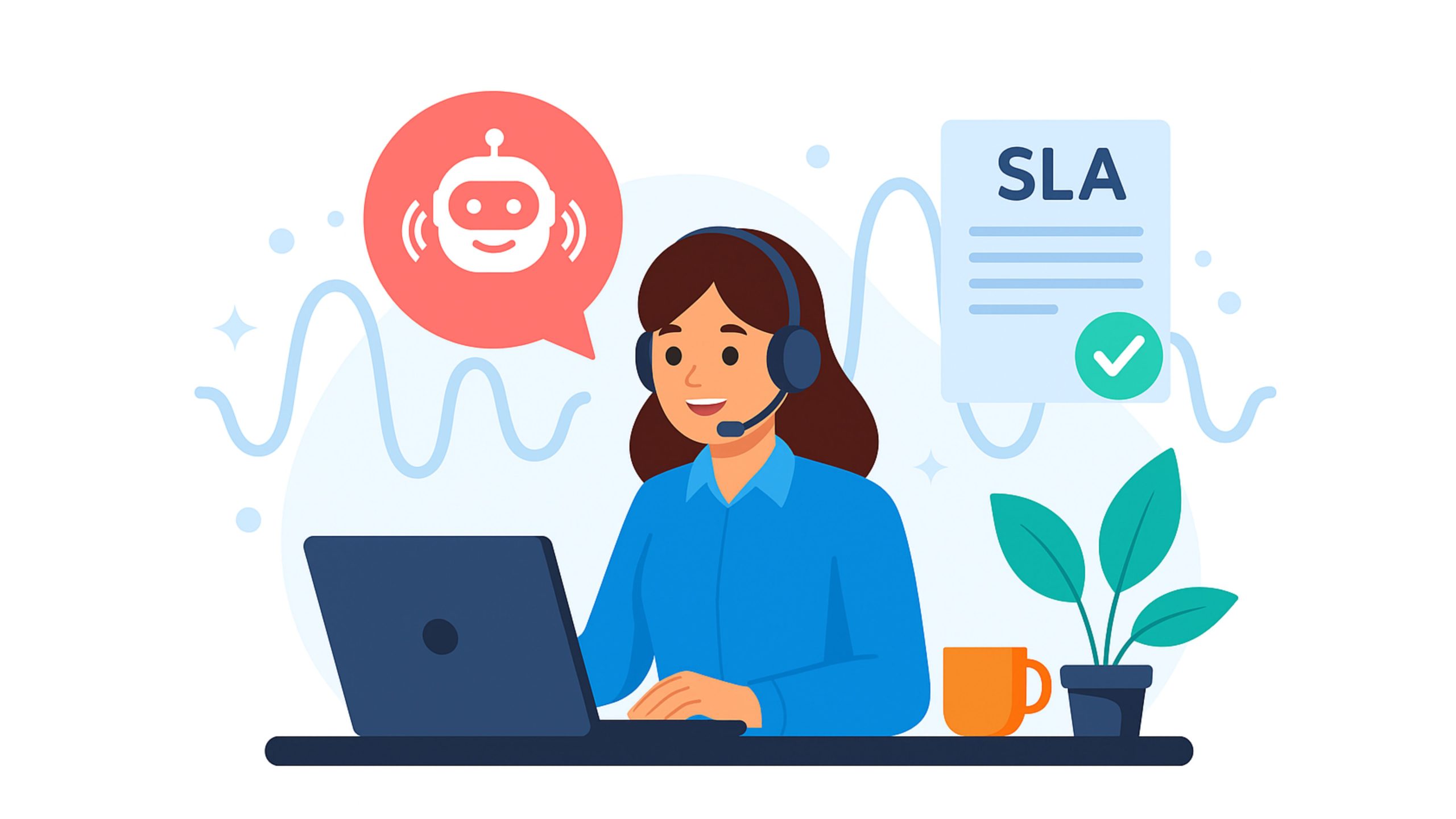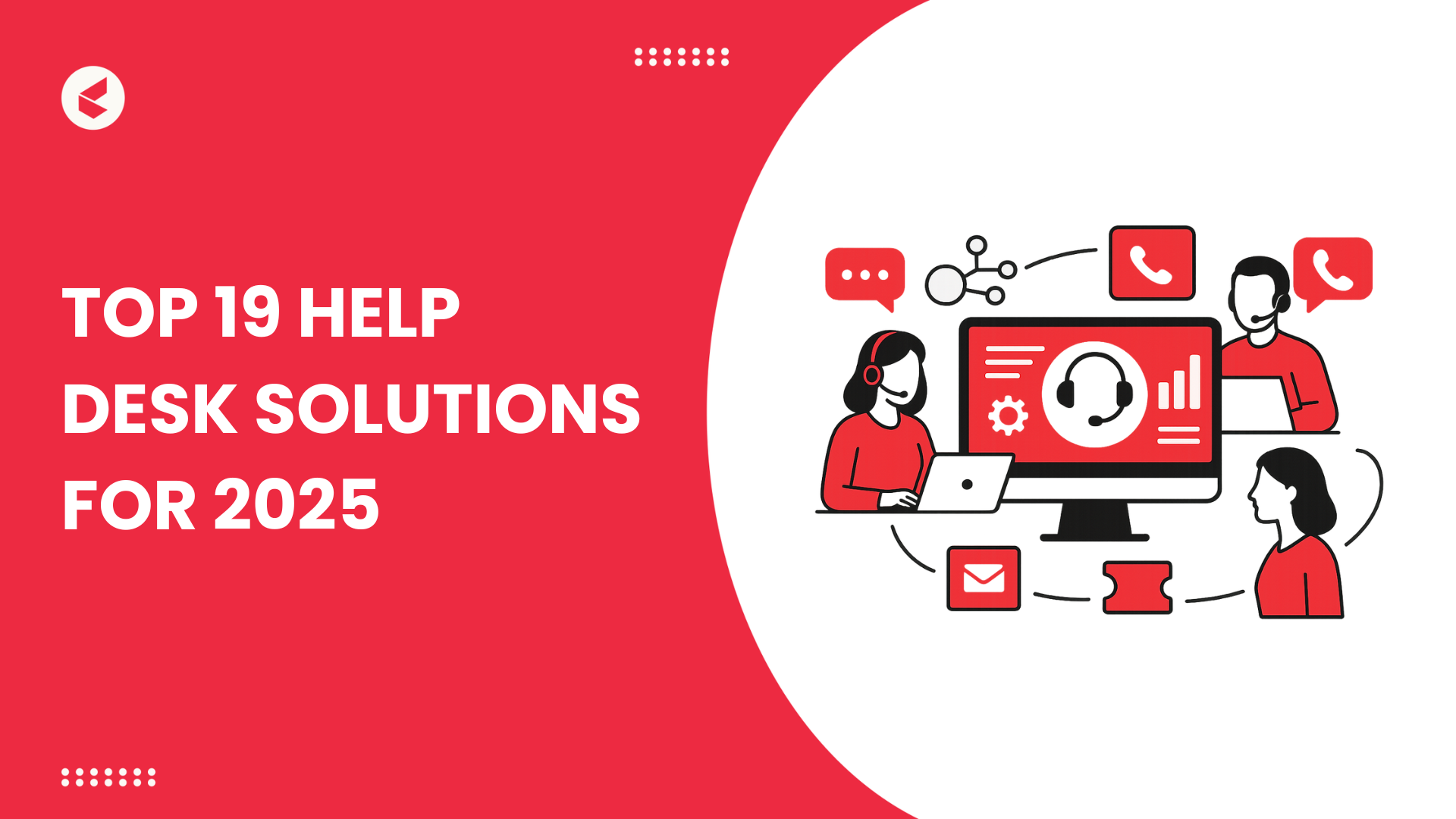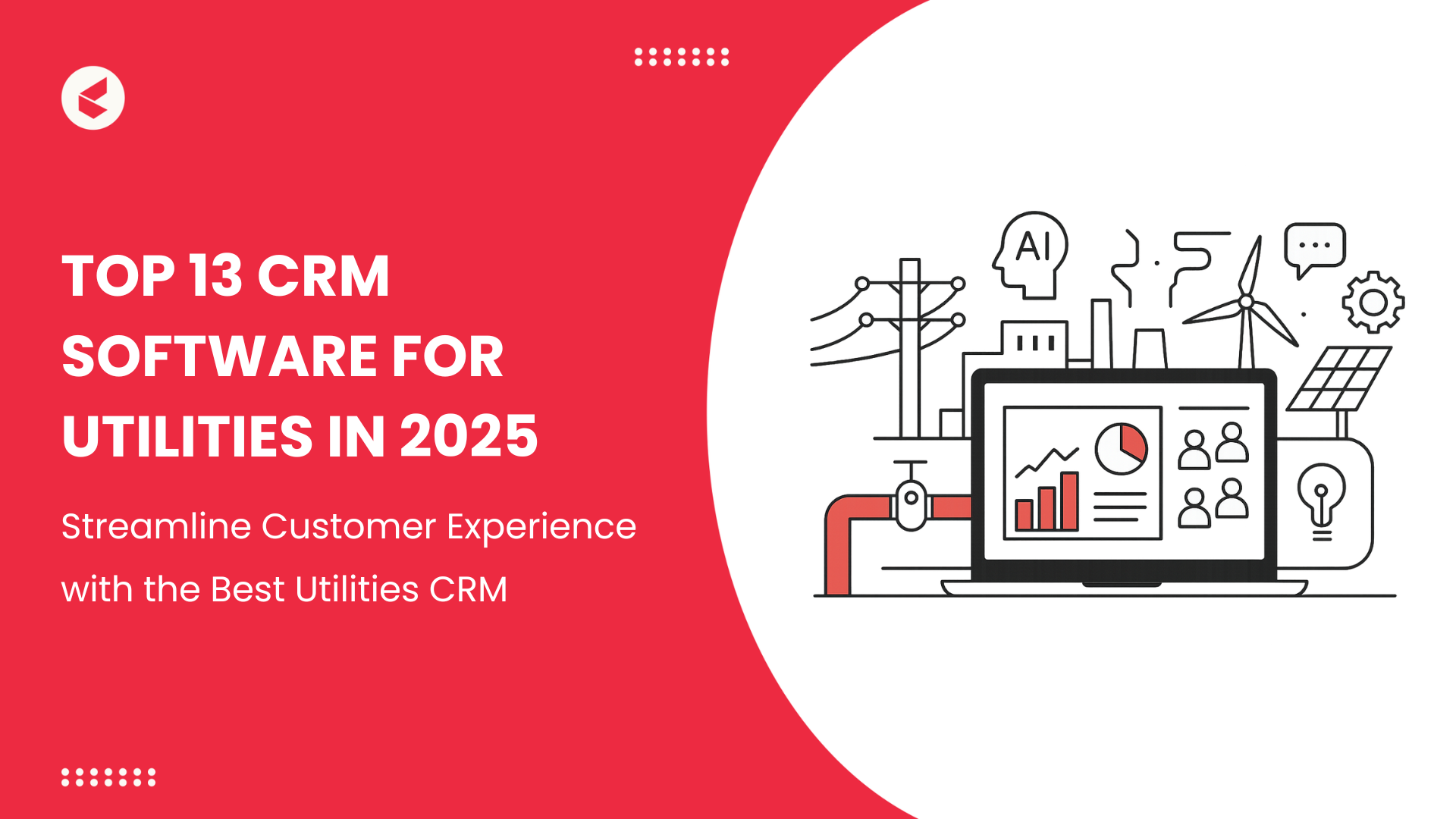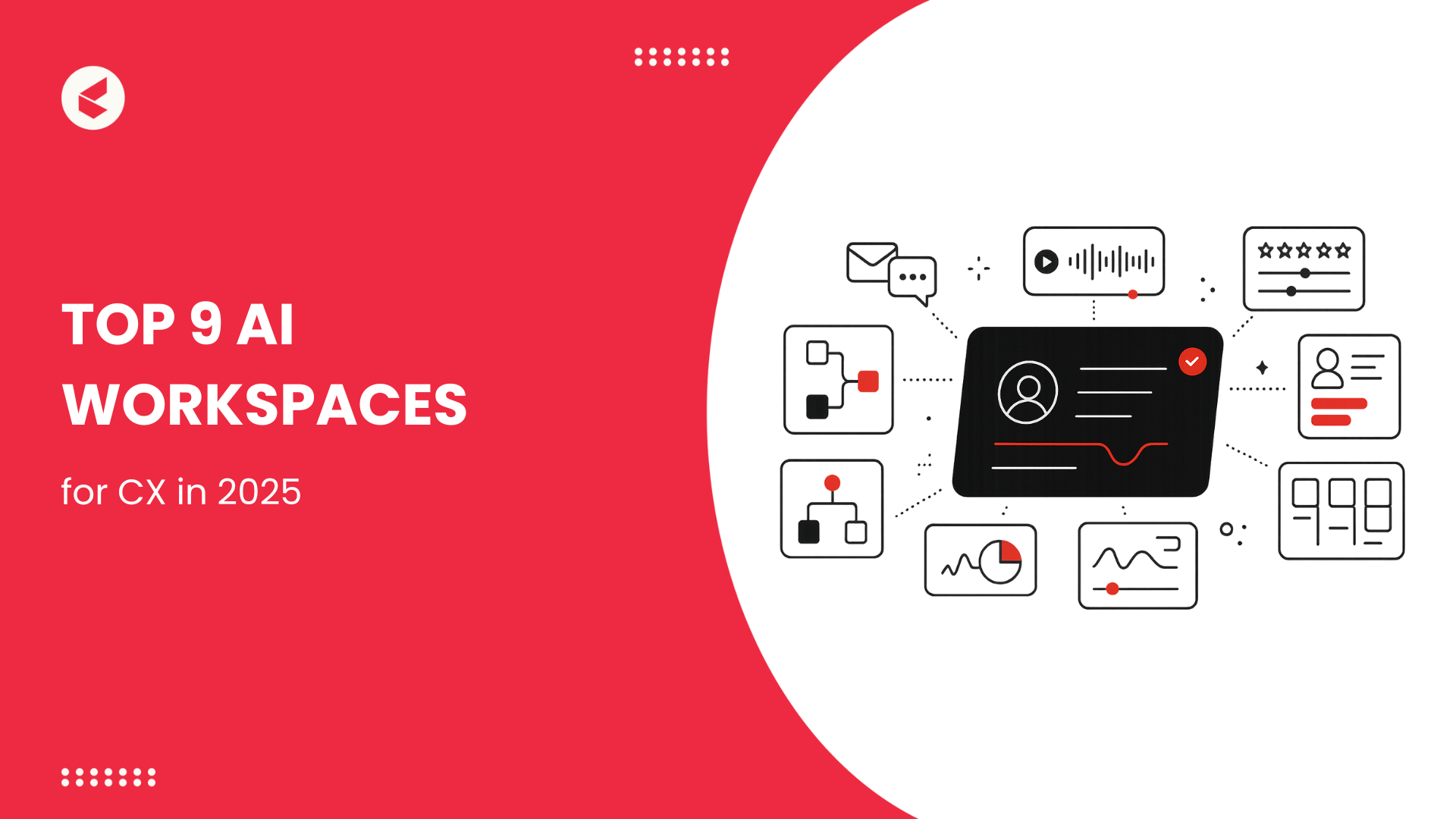Did you know poor SLA adherence could be costing you your customers and millions in revenue?
80% of consumers switch providers when their issue isn’t resolved on the first try. In fact, Forbes reports that unsatisfactory service experiences cost businesses $3.7 trillion globally each year.
At the heart of this problem is SLA compliance – meeting response times, resolution deadlines, and service standards that directly shape customer loyalty and operational efficiency.
But hitting those metrics consistently? That’s the real challenge.
Voice AI, a strategic enabler that automates responses, improves routing accuracy, supports live agents in real time, and scales support without sacrificing quality. It enables support teams to deliver on their promises.
In this blog, we break down how Voice AI helps improve SLA adherence, reduce escalations, and drive measurable improvements in CSAT and FCR.
What is SLA Adherence?
SLA adherence refers to consistently meeting the service levels promised to customers, such as timely responses and swift resolutions. For CX leaders, it’s the key to building trust and boosting revenue. For customers, it’s a reassurance that they are valued and understood.
Some of the common SLA metrics are-
- First Response Time
- First Contact Resolution
- Customer Satisfaction
- Average Handling Time
- Ticket Closure Rate
- Customer Effort Score
The Challenges Behind SLA Compliance
SLA compliance is a continuous endeavor that calls for diligence and constant improvement. Service providers can show their commitment to providing valuable customer support by continuously accomplishing SLA metrics and overcoming these common challenges.
1. High Call Volume
It becomes challenging to reply quickly and adhere to preset response times when client requests exceed the support team’s capability. Moreover, lengthier wait times and a higher risk of SLA violations are frequently the results of this overburden.
Without scalable solutions, this may result in unhappy customers and adverse reviews.
2. Manual Processes
Businesses still relying on manual processes in customer support can encounter silos due to delays in-
- Information retrieval
- Case routing
- Resolution tracking
- Real-time insights
Manual workflows increase human error and miscommunication, hindering consistent achieving SLA targets.
3. Inconsistent Agent Performance
Variability in agent skills can lead to SLA compliance issues. Some agents may resolve issues swiftly, while others may struggle with complex queries. This can lead to longer resolution times.
Inconsistent performance affects overall team efficiency and makes it difficult to maintain standard service levels across all interactions.
How Voice AI Solves SLA Compliance Challenges?
Voice AI allows automated machines to analyze and respond to human speech naturally and accurately.
Its speedy processing of vast amounts of spoken data enables businesses to automate repetitive tasks and offer individualized assistance. This directly impacts high-priority SLA adherence metrics like response time and customer satisfaction.
Let’s further understand how voice AI helps in achieving SLA targets on time!
1. Instant Call Routing
As per Forbes, 83% of consumers anticipate speaking with an agent right away.
When a customer calls in, the AI-powered system immediately analyzes their speech to identify the purpose of the call.
Next, voice AI uses speech recognition to instantly route the call to the most appropriate agent or department by classifying the question.
This rapid, accurate routing minimizes wait times and prevents multiple call transfers, which are common causes of SLA breaches.
2. Real-Time Agent Support
According to a Forbes report, 38% of consumers expect agents to have context of their query.
Voice AI meets this expectation by accessing relevant data across systems, from past tickets and CRM records to purchase history and order status. Instead of listening in, it is pre-fed with the right context before every interaction.
As a result, it can:
- Surface relevant suggestions
- Pull knowledge base articles
- Guide workflows with pre-configured prompts
By proactively equipping agents with this context, Voice AI shortens resolution times, reduces escalations, and helps ensure SLA commitments are met consistently.
3. Automated Follow-Ups
Voice AI-powered automated follow-ups expedite post-interaction procedures. Additionally, it ensures that clients receive further assistance without the need for manual engagement.
For instance, Voice AI can automatically send follow-up messages or trigger escalation workflows if needed. This automation ensures regular fulfillment of SLA obligations for follow-up times.
Voice AI Tech Powering Better SLA Compliance
Voice AI is an intricate integration of multiple technologies that combine to provide intelligent and natural-sounding speech interactions. Each of Voice AI’s tech has profound impacts on SLA metrics.
1. Speech Recognition
Speech recognition systems use sophisticated algorithms, such as Automatic Speech Recognition (ASR), to translate spoken words into text.
These systems use deep learning models trained on large datasets to:
- Analyze audio signals
- Remove background noise
- Identify speech patterns
This allows for great accuracy in a variety of settings and dialects. It enables faster routing to appropriate agents and improves overall service speed.
2. Natural Language Processing
NLP interprets the textual data by understanding context and intent. The AI understands complex queries and determines appropriate responses by using technologies like-
- Semantic analysis
- Entity recognition
- Intent classification
Modern NLP models, which are frequently based on transformer architectures, make interactions seem more organic and human. It improves first-call resolution rates and builds customer loyalty.
3. Real-Time Analytics
Real-time analytics offers instant insights during interactions to fine-tune Voice AI models. This entails keeping an eye on conversation parameters, including-
- Emotion shifts
- Speech tempo
- Keyword identification
Additionally, real-time analytics enables dynamic adaptation like adjusting responses based on user frustration levels or urgency. This further leads to more personalized and effective engagements, guiding proactive improvements.
4. Predictive Insights
Voice AI systems benefit from predictive insights by learning from past data and behavioral patterns.
Businesses can anticipate customer needs and proactively handle potential issues with predictive capabilities. It enables better resource allocation and continuous service improvement.
Integrating Voice AI with CX systems and SLA management platforms facilitates proactive management, like triggering alerts or automating responses before issues escalate.
Kapture’s Voice AI Advantage
Kapture CX’s vertical-first methodology and orchestration layer offer AI capabilities that are integrated into a unified strategic framework.
This includes AI-powered voice bots and agents that use intelligent, context-aware technology to maximize SLA compliance.
How does Kapure CX’s voice help your support team meet SLAs?
1. Vertical LLMs
Regular AI systems sometimes find it difficult to read lengthy or poorly worded customer queries. This delays resolution times and SLA commitments.
For such scenarios, Kapture offers fine-tuned vertical LLMs that enable the bot to understand industry-specific language. It is managed by an orchestration layer that dynamically routes interactions.
Impact- It ensures context-aware customer interactions, leading to minimized escalations within SLA parameters.
2. Advanced Sentiment Analysis
Neglecting customer sentiment can result in misunderstandings and lengthy interactions that jeopardize SLA promises.
Kapture’s Voice AI comes in handy as it detects customer emotions and responds with empathy. It not only interprets commands but also reads into the context of the customer interaction.
Impact- This helps deliver fast, high-end support with maximized resolution capabilities in under 2 minutes.
3. Real-Time Analytics
Support staff without access to real-time analytics could be unaware of pending queries or performance gaps, resulting in SLA violations.
With the help of Kapture’s powerful analytics, you can track real-time SLA performance metrics like-
- Average handling time (AHT)
- First contact resolution (FCR)
Impact- These valuable insights into customer interactions help teams identify bottlenecks and minimize average handle times. It increases CSATs by 30% within months.
4. Multimodal Capabilities
Consumers frequently connect through a variety of channels, including voice or chat. Conventional systems may find it difficult to comprehend and integrate these varied inputs.
However, Kapture’s voice bot is designed to interpret multiple input types at a time to offer hassle-free, focused customer support.
Impact- It increases 1-touch calls to over 90%, minimizing miscommunication and repeat contacts that can jeopardize SLA commitments.
5. Agent Assistance
Support agents may lack quick access to relevant information or best practices, leading to longer resolution times.
Kapture ensures that agents address problems within SLA periods through instant access to up-to-date resources, contextual cues, automated at-risk conversation flagging, and live agent support.
Impact- This enables customer support teams to prevent SLA breaches rather than solely relying on reactive measures.
Drive Customer Support Expectations with Voice AI
Customer service departments have traditionally addressed CX issues only after they occur. However, Voice AI is transforming this notion by embracing a proactive approach. It incorporates top-notch features to truly understand a customer’s sentiments. This directly impacts CSAT scores and helps in scaling SLA adherence rates.
If you are planning to boost the SLA adherence of your company by employing voice AI, head out to Kapture CX. We offer 24/7 Voice AI agents, which drastically minimize queue times and thereby save you support costs.
Book a product demo to see how your support team can-
- Handle 2x more queries without hiring more agents
- Resolve issues before they escalate
- Achieve 24/7 compliance with Voice AI
Start reducing SLA breaches from day one with Kapture today.
FAQs
SLA adherence in customer support refers to the extent to which the support team follows the Service Level Agreements (SLAs) established with clients. A service level agreement is a legal commitment that usually outlines availability and resolution times.
Voice AI accelerates communication by automating repetitive activities and swiftly rerouting calls. This ensures that customer concerns are resolved within defined service levels, reducing wait times.
Voice AI enhances response times and reduces agent workload by providing insightful analytics. All of these advantages work together to assist companies in meeting or surpassing SLA obligations.













